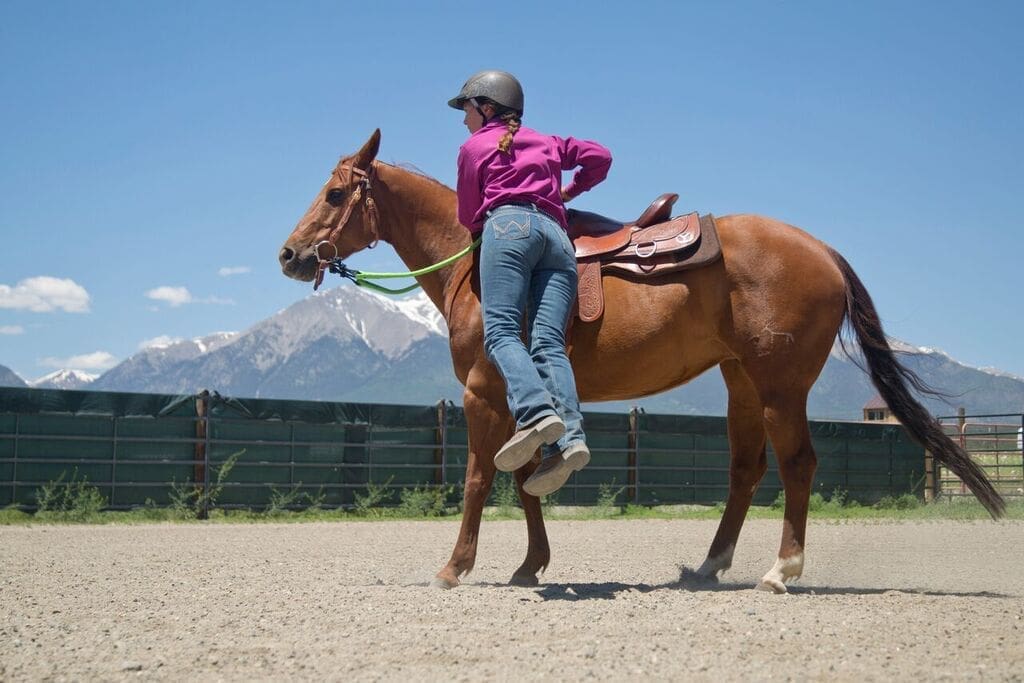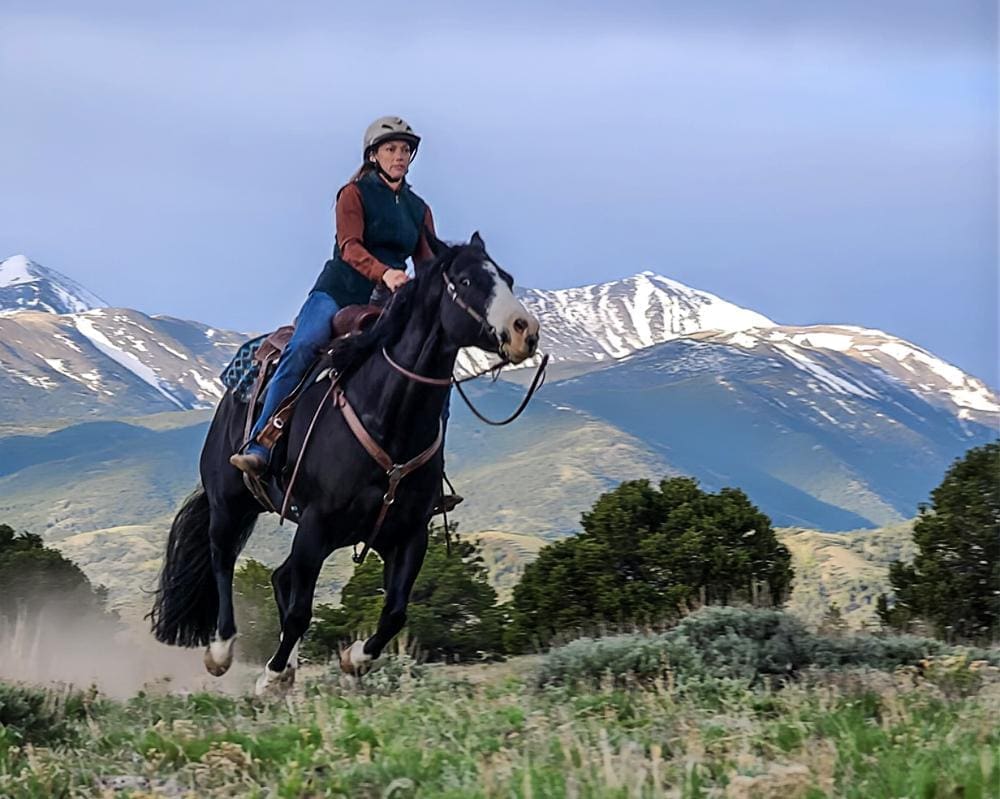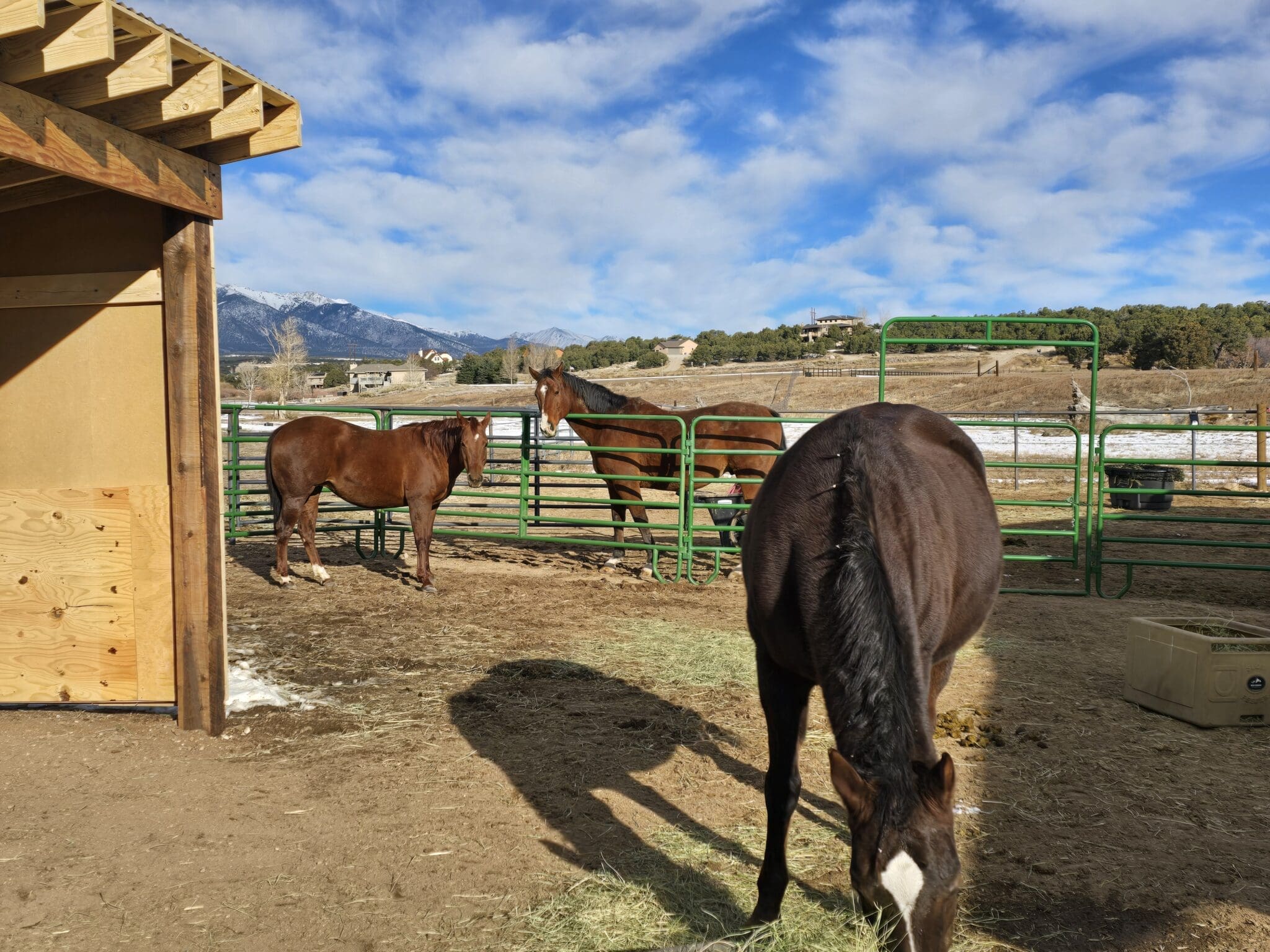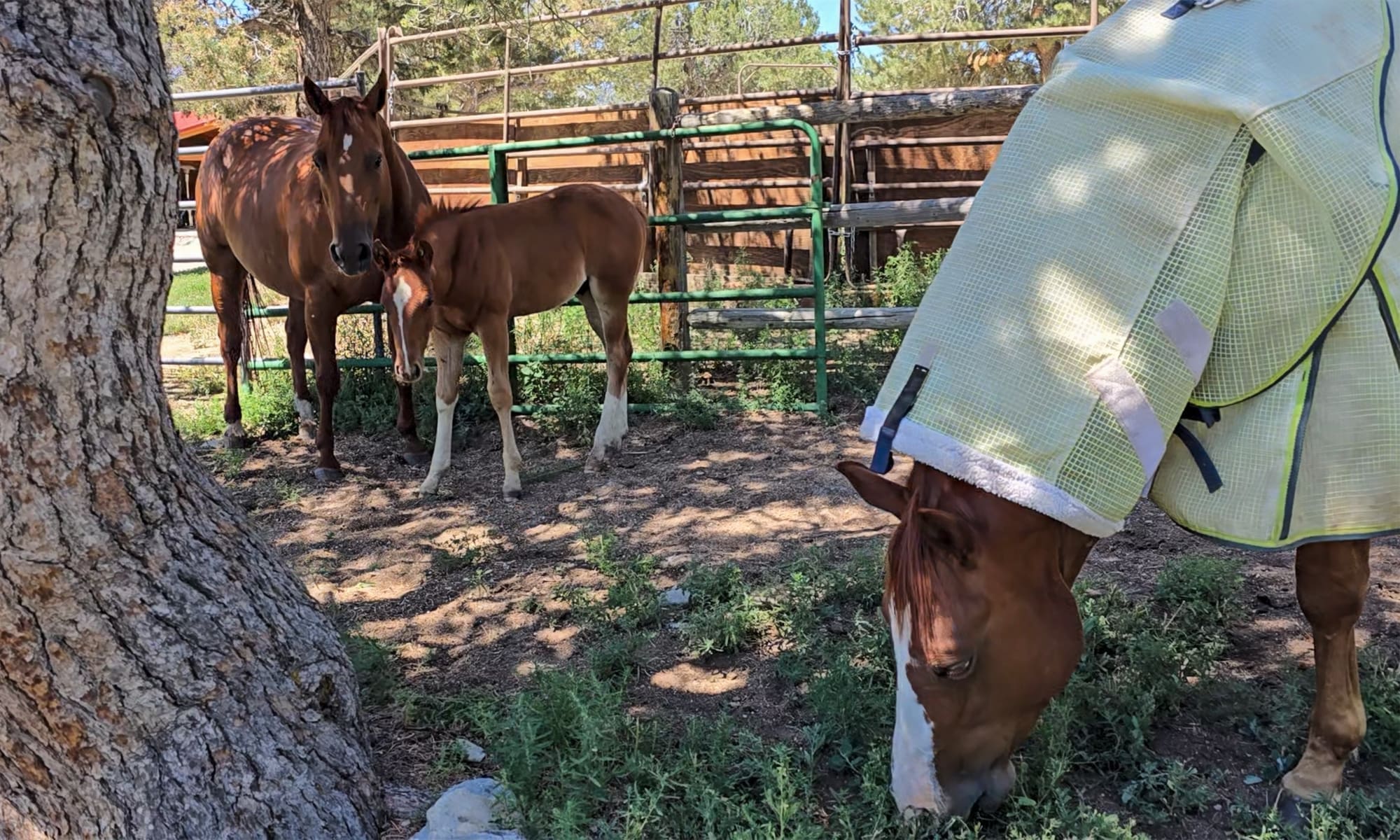
Photo Credit: Heidi Nyland Melocco
When the going gets tough… you may wish you knew how to get your feet on the ground, quickly and safely, at a moment of your choosing.
In most instances, when your horse spooks, bucks, refuses, or stumbles, it’s best to stay on top of your horse, actively guiding the horse through the problem. Statistics bear that out. Intentionally vaulting off of a fast-moving horse, to the hard ground is not always going to involve a soft landing-in practice or in real life. Nonetheless, there may come a time when the emergency dismount is your best and safest choice.
I remember one such time, decades ago, when a horse I was training panicked and bolted in a dead run straight toward a rickety old barbed-wire fence line, a few miles from home, in desolate ranch land. The horse was not bucking or hard to say on top of, but I was pretty sure I could not get it stopped and that it would blow right through the barb wire. Whether it jumped or ran through it, I did not want to be involved. Thoroughly schooled in the emergency dismount, I vaulted off the horse and managed to stay out of the cactus.

Hopefully, you will never face a time when jumping off a moving horse is the best option. But it can happen—falling, runaway, serious bucking, rearing, stirred up bee’s nest, etc. You should know how the emergency dismount is executed, be able to state the steps out loud, and practice as much of the maneuver as you safely can.
You’ll want this process tattooed in your brain, so that it happens automatically in an emergency. There will be no time in these besieged moments to ask yourself, “Now what was I supposed to do first? What were the two things Julie said were critical to my safety?” (feet out of the stirrups, let go of the reins!)
I encourage you to watch the video posted below and make a commitment to drill yourself on emergency dismount procedures. You should know what to do, in the event it becomes necessary. Then hope and pray you never need it!
Remember, vaulting off a moving horse is risky business. Taking control of the horse and proactively riding through the trouble is the best way out of most problems you’ll encounter while riding.
But learning the emergency dismount is a good idea and it helps with safety. I hope to never use the commercial grade fire extinguishers I purchased for my boat either, but I am glad I have them, I know how to use them, and I regularly practice fire drills with crew and passengers.
Caveat: Don’t get hurt practicing the emergency dismount! Know what the steps are, in what order you will execute them, and you should be able to state them out loud. But limit the times you practice actually vaulting off your horse to the ground. Sprained ankles and wrists (and worse) can easily happen while practicing the emergency dismount. For younger riders, this may be less of a problem because they are more resilient and bounce better. Always be aware of and operate within your own physical limitations.



